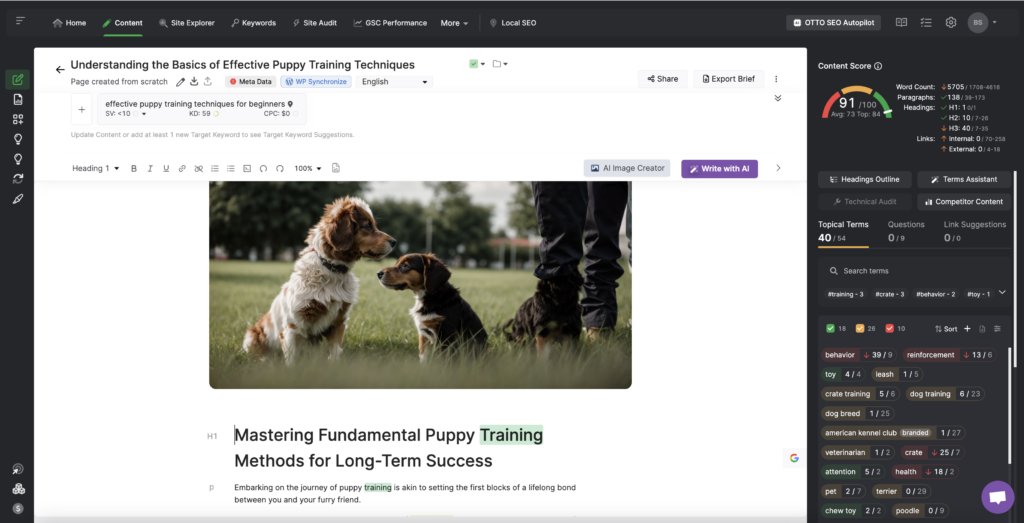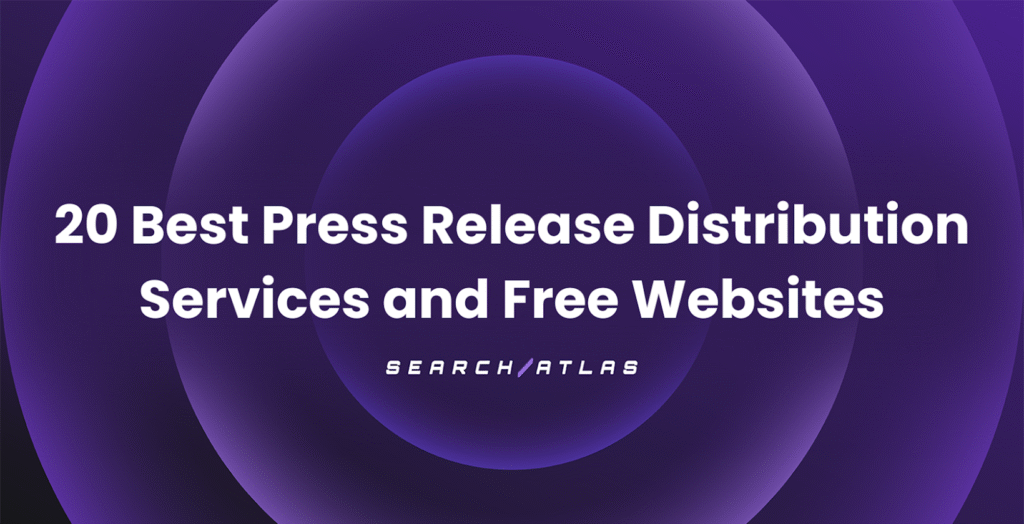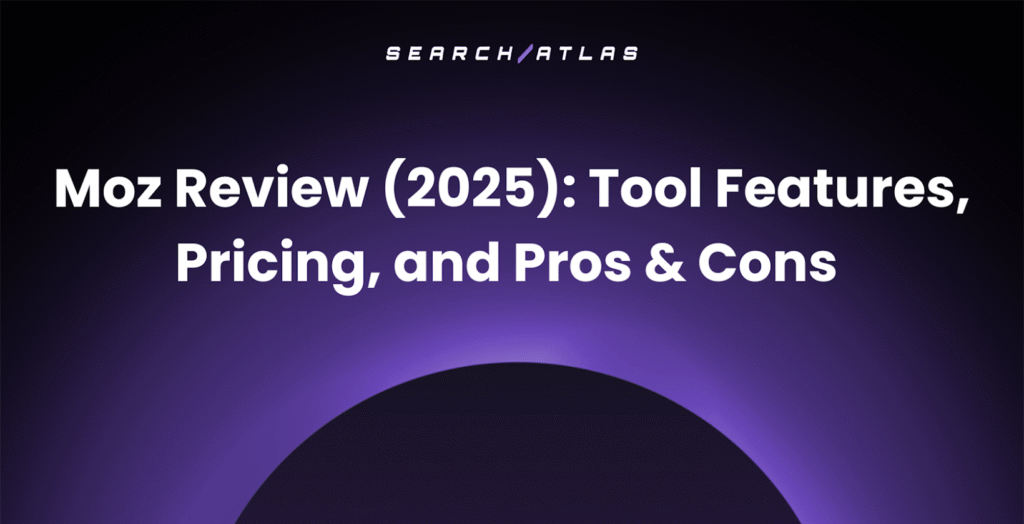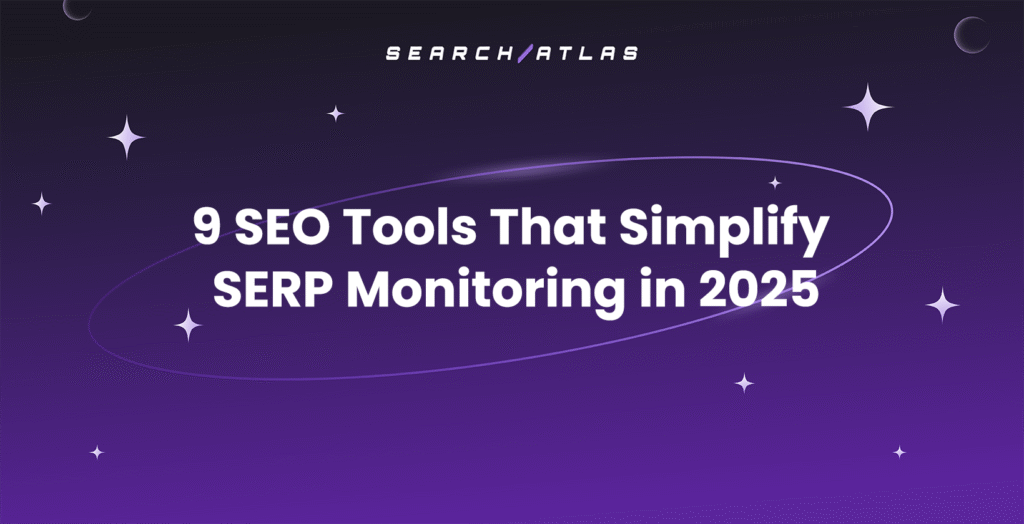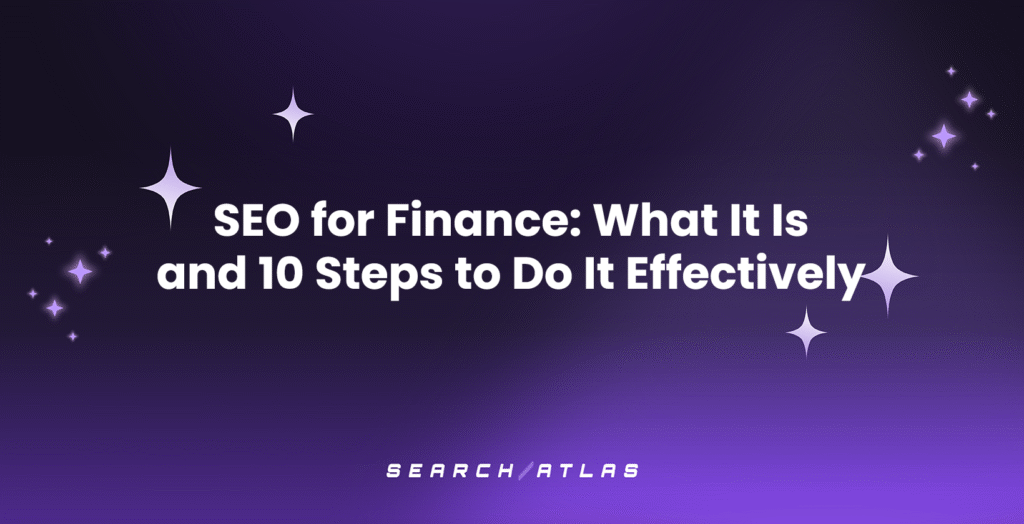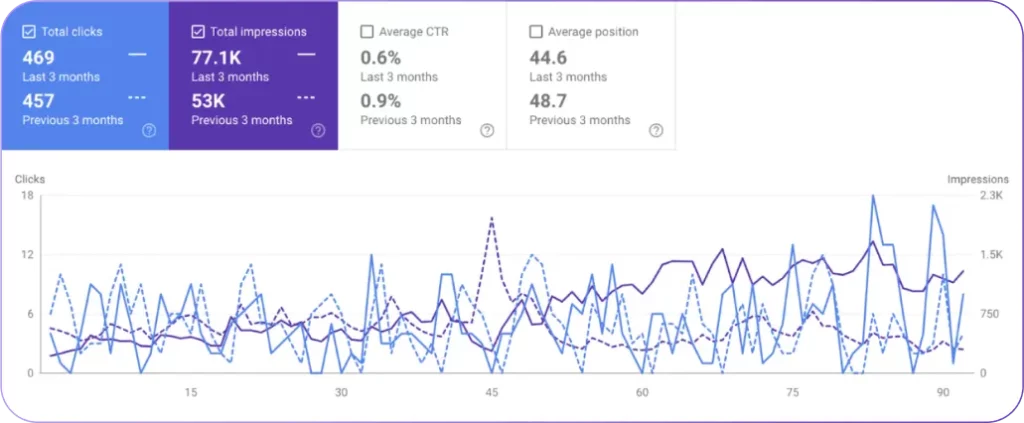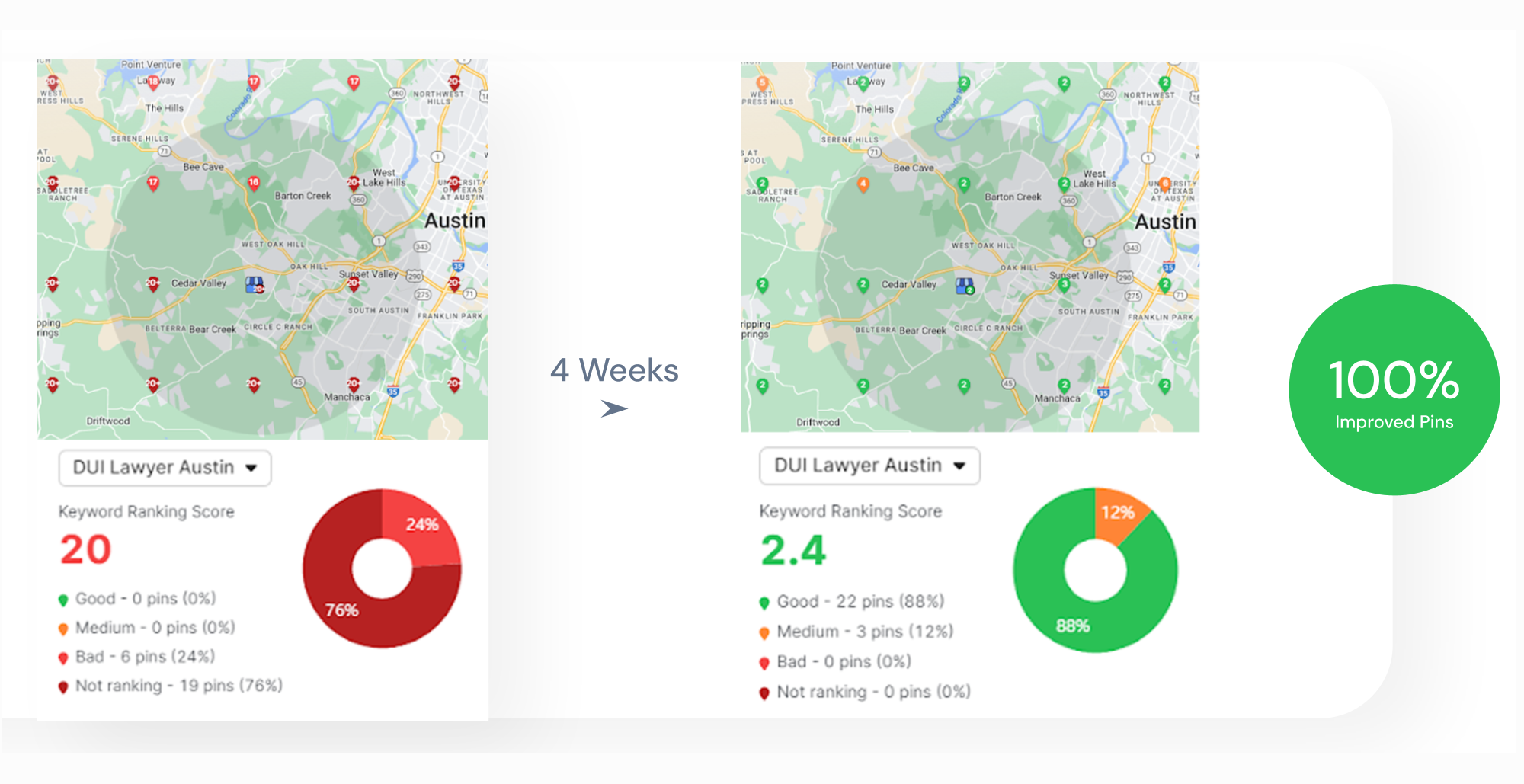Want your homepage to rank on Google? 🤔
It’s not as easy as optimizing a blog post, but don’t worry! Homepage SEO is crucial in 2025, and with the right strategy, you can boost your visibility and climb the ranks.
Many businesses either stuff their homepage with keywords or ignore SEO entirely. However, Google’s algorithms have become more sophisticated, and your homepage needs to capture attention, establish credibility, and engage visitors while sending the right signals to search engines.
In this guide, we’ll break down what homepage SEO is, why it matters, and how to optimize it easily with tools like On-Page Auditor. Get ready to turn your homepage into a powerful SEO asset!
What Is Homepage SEO?
Homepage SEO focuses on optimizing your website’s main page to rank higher in search results and attract your target audience. It differs from optimizing individual pages because your homepage serves as the foundation of your entire site’s SEO strategy. It creates the first impression for both visitors and search engines.
Why is this important? A few reasons. First, search engines look at your homepage to figure out what your site is all about and how trustworthy you are. If it’s not optimized, you’ll likely miss out on good rankings.
Second, your homepage sets the tone for the user experience (UX). Things like easy navigation, fast loading, and interesting content keep people on your site longer and make them more likely to engage.
Finally, many backlinks point to your homepage, and that “link juice” gets spread throughout your site from there.
If your homepage SEO isn’t strong, your entire site may struggle to rank. However, when done correctly, you’ll build credibility, improve discoverability, and generate more organic traffic.

How to Optimize Your Homepage for SEO
Optimizing your homepage is not complicated if you do it step-by-step. Here are some of the bst practices you can follow to ensure everything goes smoothly.
1. Choose a Primary Keyword to Know What You’re Optimizing For
Pick a keyword for your homepage by starting with search intent. Search intent defines the reason behind a search query. You want to see homepages in the search results for the terms you choose. Since your homepage describes your product, look for landing pages that share the same intent.
You can do this in Search Atlas’ Keyword Research Tool. Enter your primary seed keyword that best describes your homepage’s core offering. For example, if you’re a link building agency, you can use “link building services” as a starting point.
The tool will instantly generate related keywords and variations. Here’s how to use it:
- First, use the built-in filters to narrow your list. Adjust for search volume and competitor pressure, and mind the search intent. Focus on keywords that show homepage-like results in the SERPs.
- Next, examine related terms and group similar keywords together in the Keyword Magic Tool. This tool lets you easily identify clusters, so you can see which terms your target audience uses most frequently.
If you find one strong matching keyword, that’s your target. When multiple options appear, use the volume metric to determine which term resonates best with your audience. If no exact match exists, select the keyword that best captures your homepage’s essence.
2. Technical Optimization
Search engines use crawlers to explore your site and ultimately determine if they should index and rank your content. So, technical issues can make it hard (or impossible) for Google to find and ultimately display your website in search results. To fix:
- Ensure your homepage is mobile-friendly (check with Google’s Mobile-Friendly Test)
- Improve page speed using Google PageSpeed Insight
- Implement SSL (HTTPS) for security
- Optimize Core Web Vitals
- Enable browser caching and use a Content Delivery Network (CDN) for faster loading
You can address most of these issues using Search Atlas (though you’ll need to obtain an SSL certificate separately).
For starters, check your homepage in Site Auditor. You will get a full overview of technical SEO issues, detailed guides on fixing them, as well as live notifications.
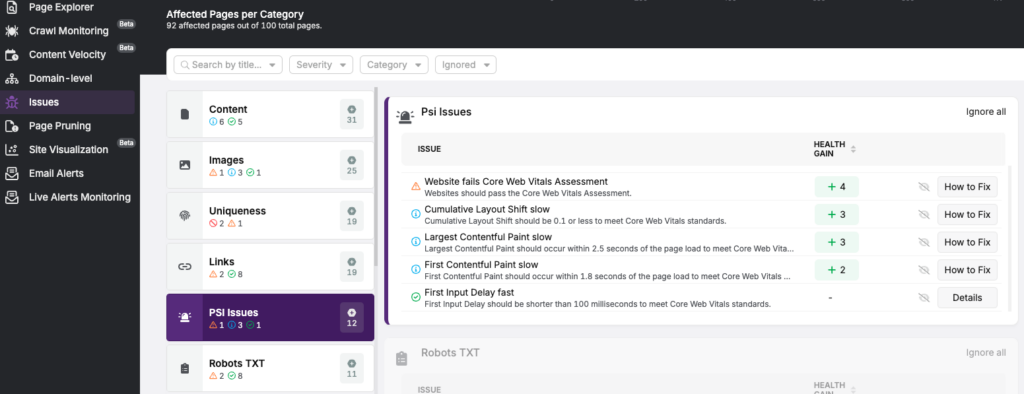
In its Page Explorer section, you can click on the homepage link and check its issues for details on speed, indexability, Lighthouse Web Vitals, and more.
The Auditor includes a useful feature for managing Schema Markup, even if you have no coding experience. The Schema Markup generator helps you create JSON-LD markup for over 30 schema types, which you can simply copy and paste into your HTML.
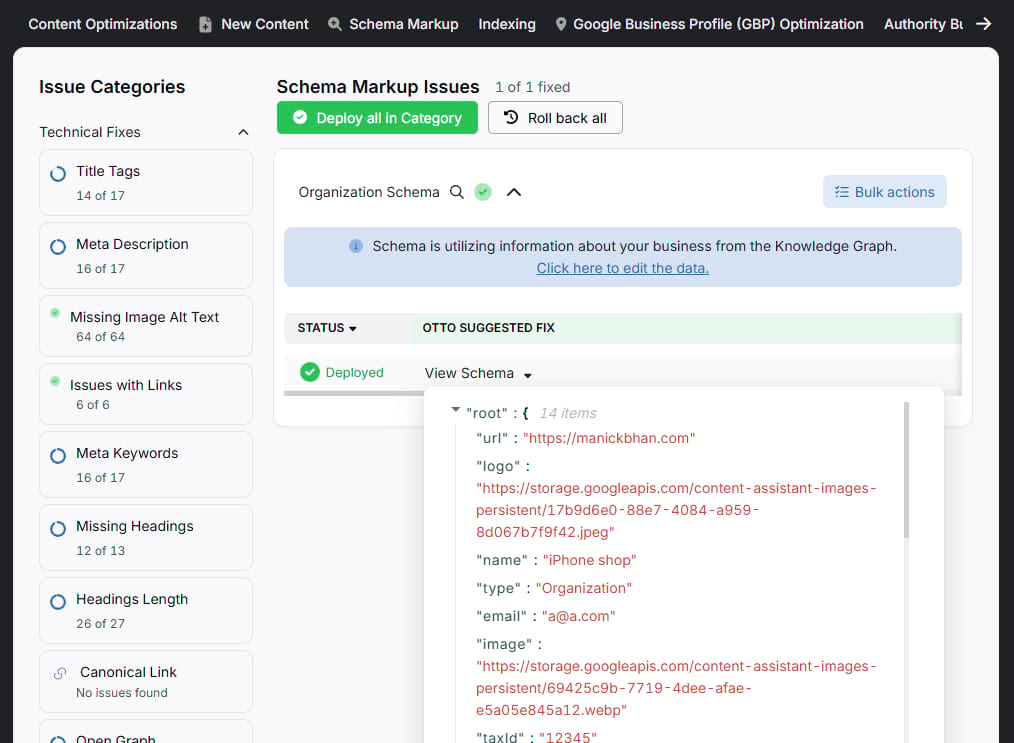
Next, you’ll want to keep your homepage updated and ready for any changes in search engine algorithms. You can do this by using the OTTO AI Assistant.
OTTO automates your technical SEO tasks (and not just them).
After you add the OTTO pixel to your website’s header, it’ll scan your site for technical problems and ways to improve your SEO. It will then give you specific suggestions based on SEO best practices and your Google Search Console data.
Once you approve the changes in your dashboard, OTTO will instantly apply them to your website, regardless of your content management system.
3. On-Page SEO
Your next homepage SEO task is focused on structure and internal linking. Here’s a checklist if you’re in a hurry:
- Use the primary keyword in the title tag, meta description, and H1 heading
- Write a compelling meta description (under 160 characters)
- Structure content with clear H2 and H3 headings for readability
- Add alt text to all images for accessibility and SEO
- Ensure internal linking to important pages (services, about, contact)
However, since this is your business or clients’ homepage—the most important page on the website—you’ll likely want a comprehensive On-Page Audit.
In most tools, you start by entering your target keyword and homepage URL. You can audit for multiple keywords at once.
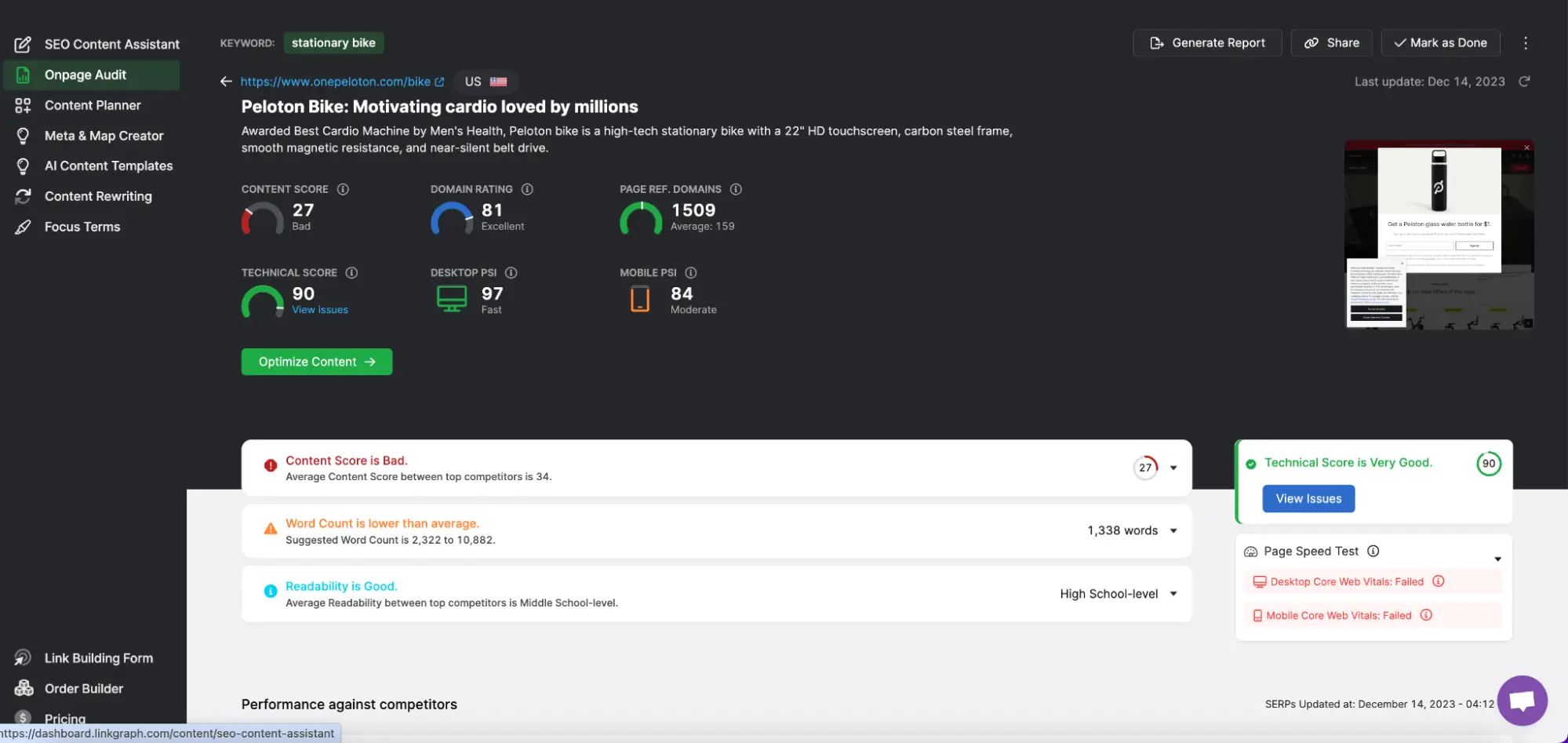
Depending on the on-page audit tools you use, you will get different results. In Search Atlas, you get to see the following:
- Content Score: It is based on word count, topical terms, focus terms, and links. You can improve your authority by adding missing terms and optimizing links.
- Technical Score: Assess meta tags, headings, and schema. When you fix these issues, you will improve crawling and indexing.
At this stage, you can also take a look at your competitors’ homepages and see what they’re doing well. This helps you find ways to make your homepage better and rank higher.
If you’re using an On-Page Audit Tool, you will also see improvement suggestions for your homepage. For example, you might need to add more content, use specific keywords, or fix your links.
If your content score isn’t great, the SEO Content Assistant is your friend, as it helps you make AI improvements as you work.
4. Content and User Experience (UX)
Your homepage isn’t just a first impression—it’s your chance to rank and convert. Strong content and a smooth user experience help search engines and visitors understand, trust, and engage with your site.
But first, it has to be perfectly clear what your business is all about and what it offers.
For Search Atlas, it’s having unique AI tools that save time and improve SEO. Here’s how we made sure our visitors see that first:

That said, there are a few other things you should know:
- Social Proof: We suggest using testimonials from clients, industry expert opinions, or relevant publications.
- Copy: Keep your homepage copy concise, informative, and conversion-focused.
- Media: Use high-quality images and videos that don’t slow down the page.
- CTAs: Use clear and compelling CTA buttons (like “Learn More,” “Get Started,” or “Shop Now”) to direct them towards important actions, such as making a purchase, signing up for a newsletter, or contacting you. Placement and color are important too.
- Menu: Design a clear, logical navigation menu that organizes your site’s content effectively, allowing visitors to find information quickly.
5. Backlinks
Backlinks play a crucial role in helping your homepage rank for non-branded keywords. Like any page, your homepage needs strong, high-quality backlinks to compete effectively in search results.
The more authoritative and relevant links you acquire, the better your chances of ranking in the top 10. However, not all backlinks carry the same weight.
Here’s what makes a backlink valuable:
- Relevance: Links from websites in your niche carry more authority.
- Authority: Backlinks from strong, high-ranking pages pass more ranking power.
- Traffic: Links from pages with organic traffic have a stronger correlation with rankings.
- Placement: Links higher in the content, where users are likely to click, pass more authority.
- Anchor Text: Google considers surrounding content for context, though anchor text alone has a weak correlation with rankings.
- Follow vs. Nofollow: Follow links influence rankings, while nofollow links generally don’t.
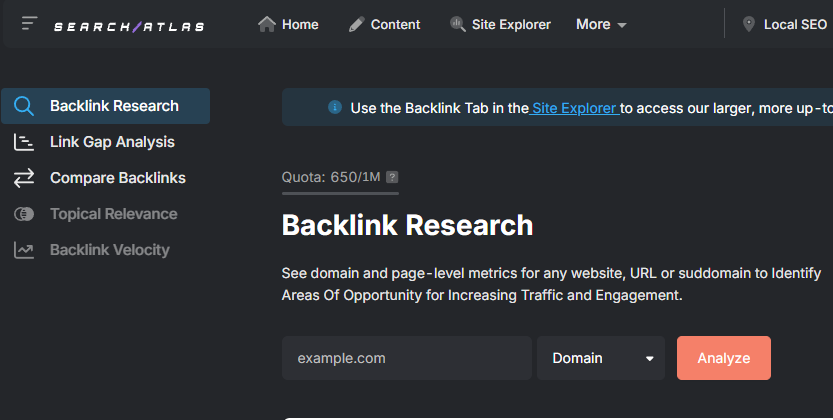
You can analyze your backlink profile and compare it to your competition with the Backlinks Analyzer tool. By examining the quality and relevance of sites linking to your homepage, you can identify opportunities to acquire high-quality backlinks, which are essential for improving search engine rankings.
6. Off-Page and Local SEO
Since high-quality backlinks are difficult to acquire, you’ll have to use advanced off-page tactics.
Manual approaches (such as direct outreach) are time-consuming and often frustrating. Fortunately, specialized tools can streamline this process.
In Search Atlas, you can use the Outreach Tool to find link prospects, manage digital PR, perform large-scale campaigns with customizable pitch templates, and automate your link building workflow.
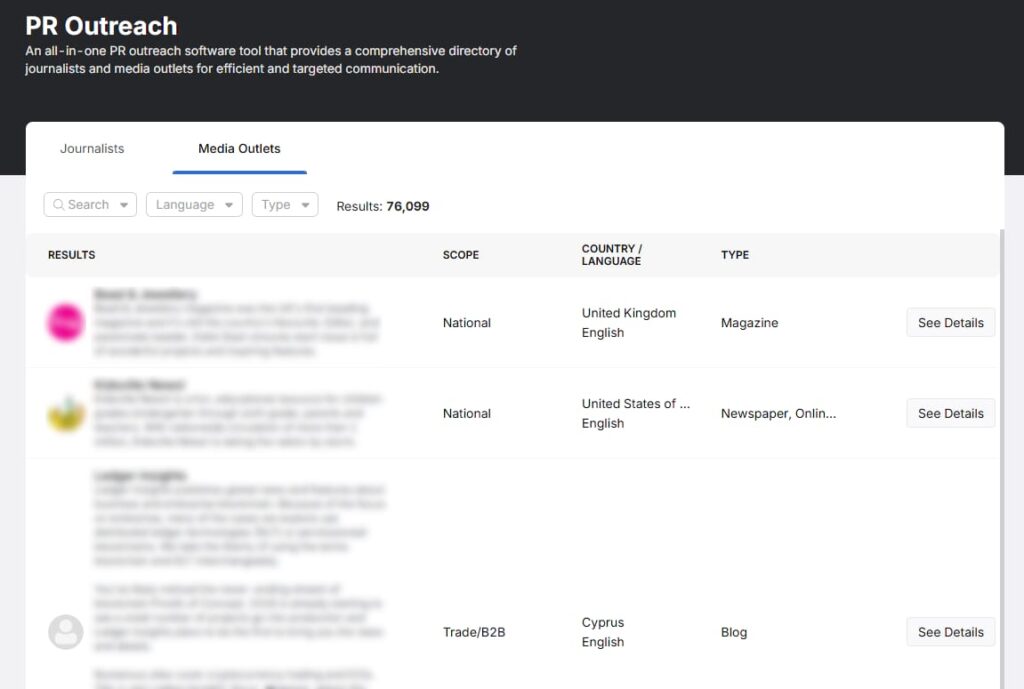
You can also use Quest directly from your Content Dashboard and generate personalized outreach emails to ask for inclusion in relevant blogs or content lists.
Other tools include Press Release Syndication, which lets you effortlessly generate high-quality press releases using AI. After that, you can distribute them across a vast network of authoritative news sites to get backlinks.
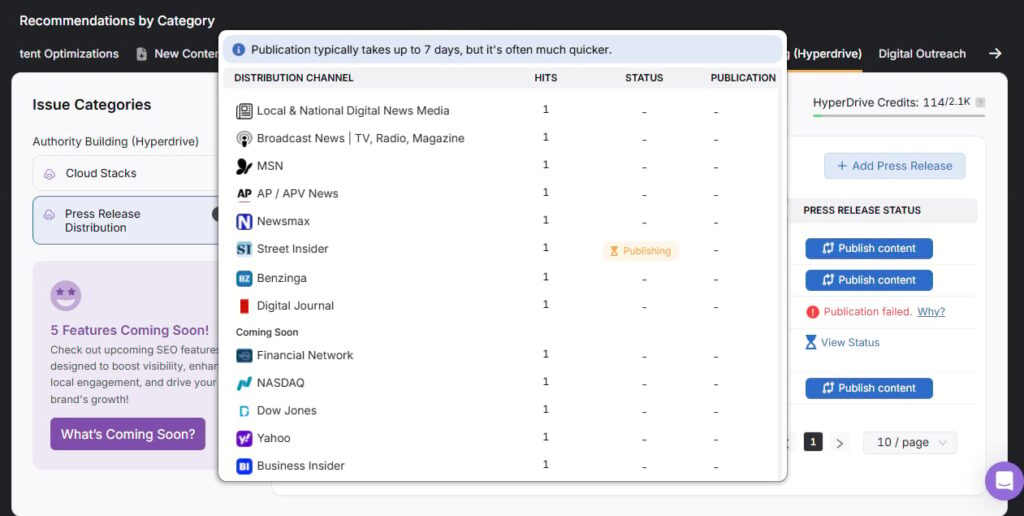
After that, ensure your business is listed on Google Business Profile (GBP), and manage your profile. This is now automated with Google Business Profile Management Software.
Search Atlas’s Google Business Profile Management Software streamlines the optimization of your business’s online presence. Designed for agencies handling multiple local clients, it enables efficient management of all GBP listings from a single dashboard.
The platform uses AI to generate engaging Q&As, enhancing local keyword rankings through enriched content. Additionally, it offers tools for manual review responses, supporting reputation management and helping acquire more 5-star ratings.

Finally, most links to your website will direct to your homepage. Some of these can be acquired through Local Citations.
Search Atlas makes it easy to get your business info out there. They work with five big data partners (Data Axle, Foursquare, Neustar Localeze, Yellow Pages Network, and GPS Network) to quickly share your details across the web.
This helps people find you locally and boosts your homepage’s search ranking. It’s also cheaper than submitting each one separately, saving you money while driving more traffic to your site.
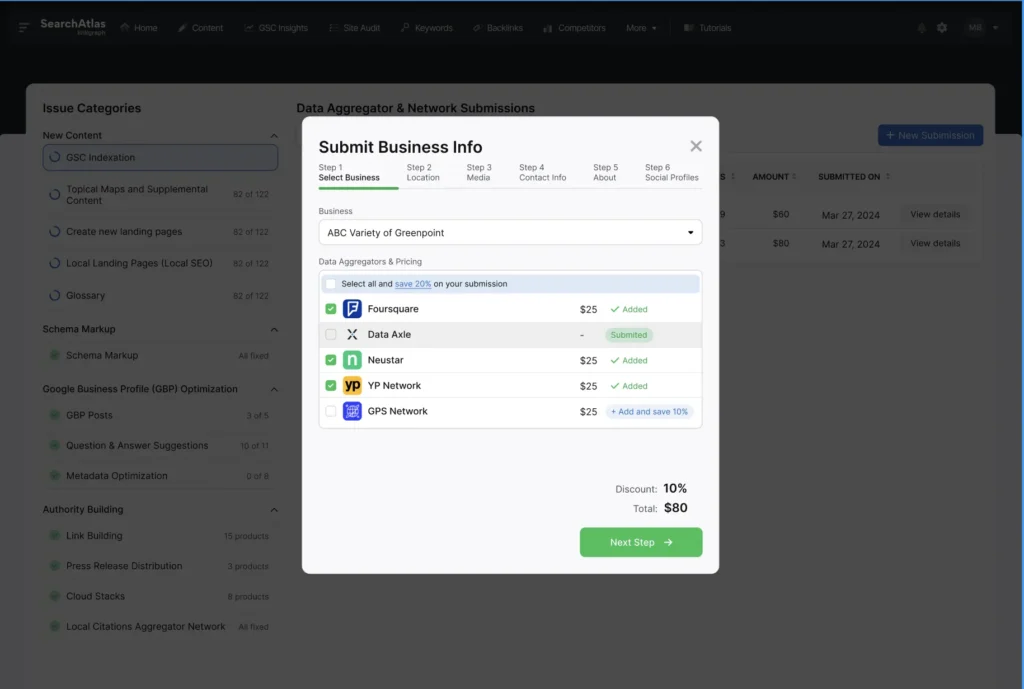
7. Ongoing Monitoring and Optimization
Maintaining high rankings and website performance requires continuous effort. Search engines regularly update their algorithms, and user preferences evolve, necessitating consistent monitoring. Here’s what you should do:
- Track homepage rankings for target keywords
- Monitor bounce rate and user engagement in Google Analytics
- Regularly check for broken links and fix them
- Refresh your content periodically to keep it fresh and relevant
- Test different CTAs and headlines for conversion rate optimization (CRO)
This is another thing our OTTO does perfectly. It discovers fixes, applies them, and saves you hours of work. And it doesn’t cover just technical things.
It looks at your content, your digital PR, local SEO, backlinks, and more. In fact, it automates almost any SEO task, while automatically staying on top of Google updates.
Optimize Your Homepage (And All Others) With Search Atlas AI Tools
In a nutshell, homepage SEO is essential for making your online presence stand out. By maintaining regular optimization and monitoring, you’ll not only impress search engines but also create a welcoming experience for visitors.
Let Search Atlas elevate your homepage performance. Our comprehensive platform has proven to significantly boost rankings and deliver the results you need.
Why not test it for yourself? Sign up for a 7-day FREE trial and see how the latest tools in the industry work.


